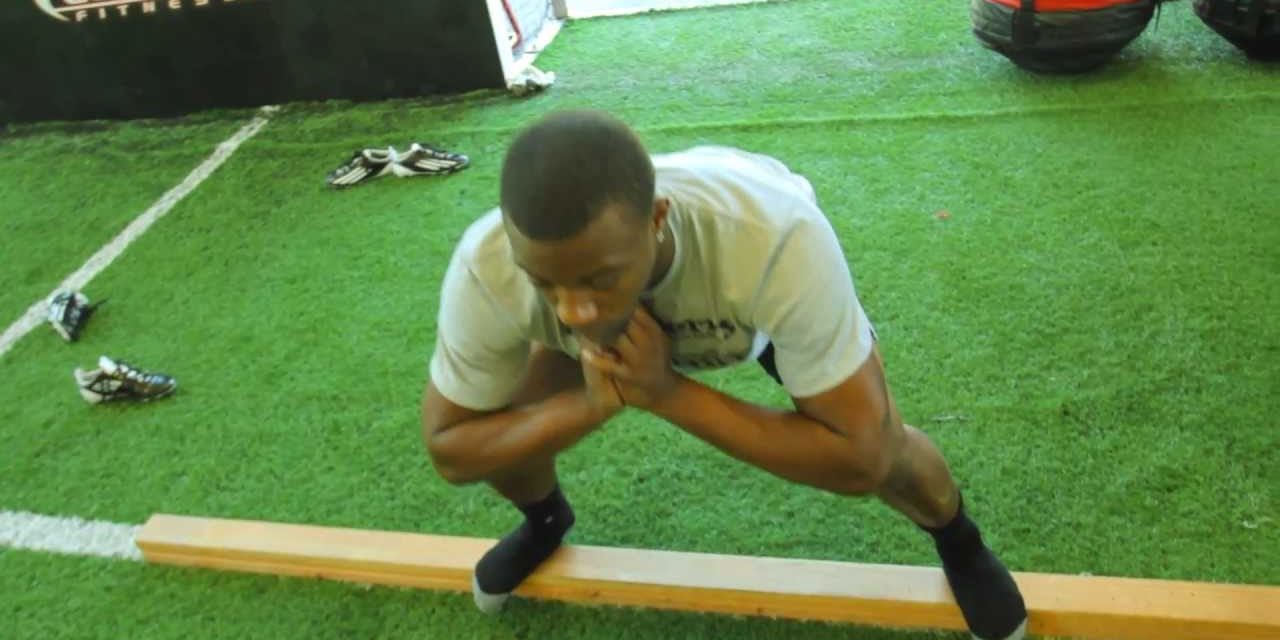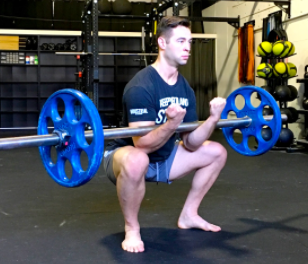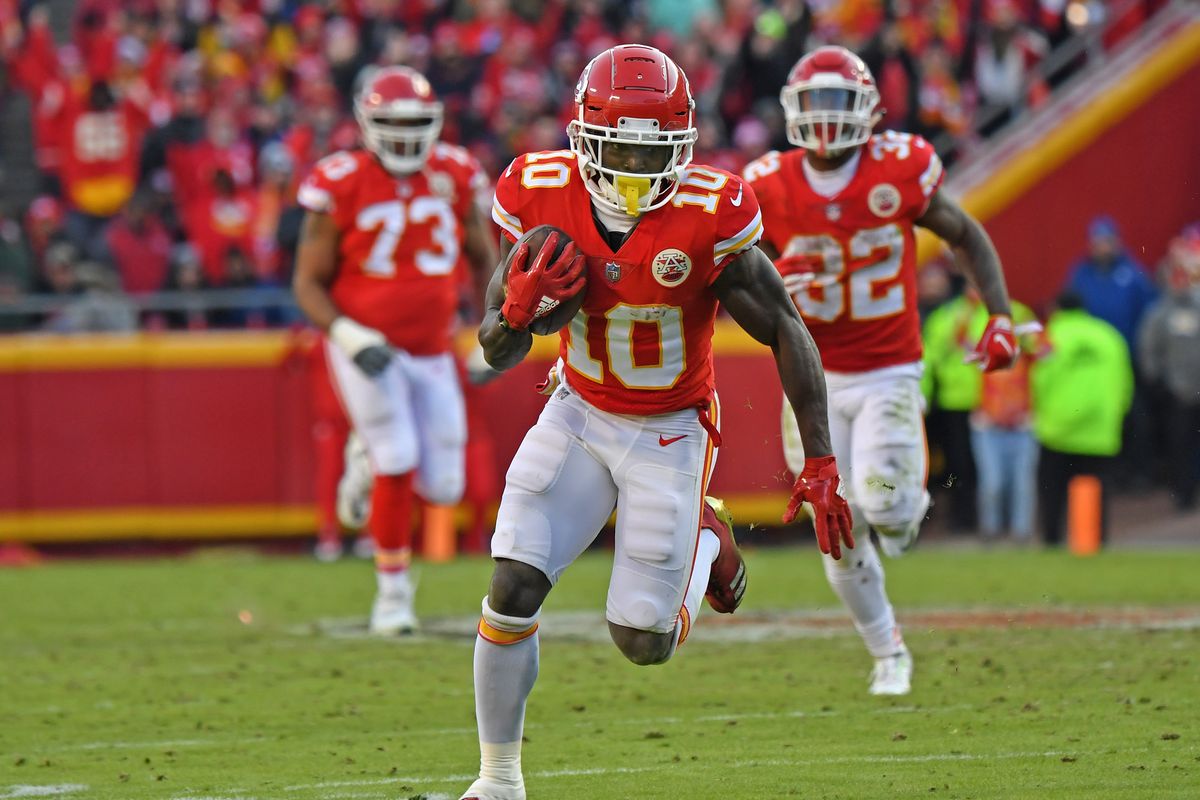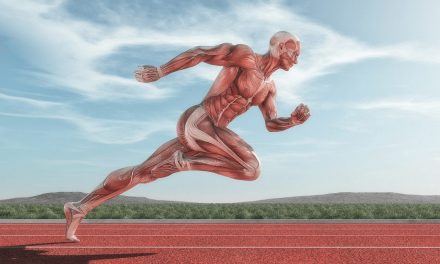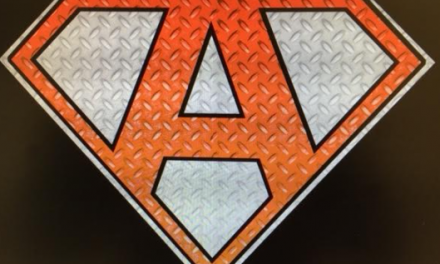In Using The Feet To Increase Strength And Limit Injuries, I discussed how understanding the Center of Mass and using the feet properly can be used to create better athletes. Another part of teaching the feet to work properly is balance training. Balance training is not something that most football programs deem important or they think the time can be utilized better but it is easy to implement and program without taking up a lot of extra time. Below are some ways to implement balance training into your programs and coaching points that are vital to successful balance training.
Goal of Balance Exercises
It is a good question to ask “Why should I program balance exercises?”
- Balance influences athletic movement proficiency and fluidity.
- It improves the strength and functionality of stabilizer muscles. A lot of exercises work the big muscles but do not concentrate on the tendons, ligaments, and other connecting tissues. The first time athletes do balance exercises they always react the same way. They cannot believe how much their hips, knees, ankles, and arches burn when it seems like they are not doing very much.
- Balance exercises train the nervous system through proprioception. Proprioception is the ability to know where your body parts are located at any given time.
- Balance exercises help with injury prevention. Many athletes get injured because their stabilizer muscles are weak which leads to improper movement patterns. An example of this is when athletes’ knees dip in while squatting heavy weights. Also, the more the Center of Mass is moved around the more likely injuries will occur.
- Balance exercises move the Center of Mass which makes the nervous system have to react. It is a good idea to teach athletes’ bodies to be comfortable in a variety of situations so it knows how to react when it gets put in awkward situations.
Do Balance Exercises
If I asked a person, “How do you get better at hitting curveballs?”, they would say, “Practice hitting curveballs.” The same thing applies to balance exercises. I like to break the exercises up into three categories and program them into the “prehab” portions of our workouts.
Just like any other portion of your workouts, teaching exercises correctly is more important than picking the exercises. While some people do balance exercises, most do not teach athletes techniques to improve their balance. Some of the coaching points for balance exercises are:
- If you are standing upright, keep your shoulders over top of the hips. This will keep the Center of Mass in the anatomically correct position and will allow body pressure to be evenly distributed along the foot. If the Center of Mass moves in any direction, balancing becomes more difficult.
- Keep the eyes fixed on one spot. If their eyes move, the head will move. If the head moves, the shoulders move. If the shoulders move, the Center of Mass moves.
- There are three sets of muscles that have to contract. The Quad, the Glute, and the Abs have to squeeze tight to lock in place. A lot of athletes think they have poor balance when they actually are just not engaging the right muscles to have good balance.
Teaching Balance Through Dynamic Warm-Up Exercises
Even though dynamic warm-up exercises elevate body temperature, improve flexibility, and prepare the body for more rigorous exercise, warm-up exercises should also be picked to train the nervous system. On top of proper programming, the execution of the exercises has to be very deliberate.
Please watch the following and then continue reading the article.
There are many things that this athlete does perfectly (his skipping drills are perfect) but the athlete is not practicing balance during the dynamic flexibility exercises. I am not sure if they are trying to work on balance but it is a good idea to integrate balance training when appropriate. If they would want to make this routine improve balance, they could adjust a couple of things. Below are some potential fixes and suggestions to add more balance components:
- Do not take steps between each repetition (0:57 mark). While doing any type of balance or dynamic flexibility work, the athletes should not “take steps” between each repetition. Most athletes do a repetition, take a couple steps and do the next repetition and this causes multiple problems. One is the athletes do not have to use balance to control the current movement and to progress to the next movement. The second problem is they are doing less repetitions.
- Try to go directly from one movement to the next so the body is more off-balance and therefore has to concentrate on it. (1:25 mark)
- Do not take balance steps on lunges (0:50 mark). He should just shoot his foot through to start the next lunge instead of coming to an even foot stance between lunges.
If you watch most teams warm-up, they are not following the above suggestions. To be fair, it is very hard to get athletes to buy-in with the above suggestions and I am fighting this battle daily. These suggestions make each exercise harder and longer so most athletes are going to try to cheat their way through it. Most people do not like to warm-up and coaches are usually not paying attention so that adds another layer to this problem.
The following dynamic flexibility exercises can be used to improve balance:
Incorporate Balance Training Into Auxiliary Exercises
Ozzie Newsome (former General Manager of the Baltimore Ravens) said, “We only draft players that DON’T fall down.” Newsome drafted a lot of great defensive players during his tenure so he was on to something. If you do not have the time to do balance exercises by themselves, here are a couple of examples of incorporating them into your current exercises:
Upper-Body BOSU Ball Exercises.
For high school athletes, I would not recommend adding a balance component into any exercise that is programmed for muscle growth or strength because balancing on one limb will make it harder to lift a lot of weight. Just remember that the point of adding a balance component is to teach the motor neurons to work correctly more than trying to lift as much weight as possible. That being said, if the goal is to gain strength, then adding a balance component would not be appropriate.
Teach Balance Through Unilateral Exercises
Ultimately sports are played on legs that are moving independently of each other and rarely do both legs or arms move in the same direction at the same time. Unilateral exercises can be done to improve balance but also can build strength and hypertrophy. Here is a list of unilateral lower body exercises that can be used:
Advanced Balance Exercises
To take balance training to the next level, here are some variations that can be used:
- Take the shoes off. This will allow the foot to have to work at a higher rate because it does not have the shoe as a crutch. Shoes are made so well that they can help eliminate the need for highly reactive feet and that is why some strength coaches force their players into wearing shoes like Chuck Taylor All-Stars.
- Do balance exercises while closing your eyes. Proprioception is thrown off because there is not a data match between the mind and body because the information received through vision is an important part of balance.
- Change the eye focus. If you are doing “Balance Holds”, the athlete can focus on something near them and then focus on something far away. Going back and forth between those focus points will make the exercise more difficult while training the nervous system.
- Keep the eyes focused on one thing and then move the body. This could be done by doing Backward Lunges while staring at one spot or doing “Balance Wobbles” while staring at a particular spot.
- Use Balance Equipment. This will allow an athlete to stabilize on an unbalanced surface.
- Balancing on a wobbly surface and then doing sport-specific actions is a great idea. I have seen people do this for golf shots, shooting free throws, etc. An extreme example of practicing catching while standing on a Yoga Ball is Alvin Kamara standing on a Yoga Ball. I would not try this with anyone unless they are an extremely high level athlete because this could easily hurt someone. A more appropriate version of this drill would be Fitball Balance Drills.
Incorporate Balance Exercises Into Flexibility Programs
The following exercises are part of the exercise bank for “Bikram Yoga”. By looking through the poses, it is obviously clear that this program can help athletes improve their balance.
Conclusion
Workout schedules are a zero-sum game so I understand why people do not think they have enough time for balance exercises. That being said, balance exercises can be integrated into many facets of the programming that will not add any time or take away from other programming. I spend a lot of time working on making my programming “dense” so we get to practice all of the needed athletic skills within a tight framework.If you are interested in learning more you can go to the resources page on my website (https://exceleratead.com/training-theory) to find my FREE and moderately priced CoachTube Courses, Coaches Choice Videos, and a variety of other training articles and resources. My contact information is on my website so please feel free to email me with any questions.

